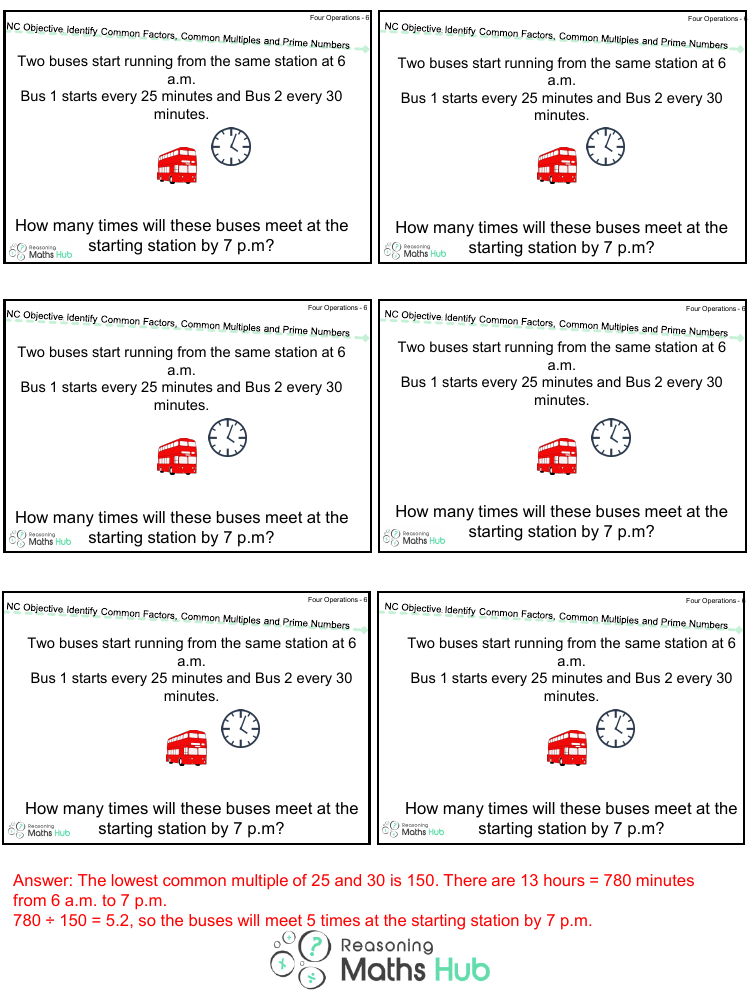Identify Common Factors, Common Multiples and Prime Numbers 3 - Reasoning

Maths Resource Description
When two buses begin their routes from the same station at 6 a.m., with the first bus departing every 25 minutes and the second every 30 minutes, a mathematical problem arises concerning the frequency of their meetings at the starting station. To solve this, we must first determine the lowest common multiple (LCM) of their departure intervals. The LCM of 25 and 30 is 150, which means that both buses will coincide at the station every 150 minutes. From 6 a.m. to 7 p.m., there are a total of 13 hours, which equates to 780 minutes. By dividing 780 by 150, we find the result is 5.2. This indicates that the two buses will meet at the starting station 5 times before 7 p.m., as the .2 represents a partial meeting which cannot be completed by the specified time.
The calculation takes into account the entire duration from the start of the service until the 7 p.m. deadline. It is important to note that while the buses start at the same time, their differing intervals will cause them to align at the station only when both intervals have reached a common multiple. The 5 meetings will be the points in time when both bus schedules align perfectly, allowing them to be at the station together. This scenario is a practical application of finding common multiples in everyday life, specifically in the context of public transportation scheduling.